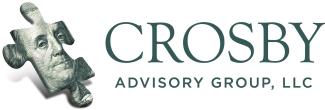
Where are we in the market cycle?
“You can’t be a good value investor without being an independent thinker – you’re seeing valuations that the market is not appreciating. But it’s critical that you understand why the market isn’t seeing the value you do.”
- Joe Greenblatt
Market Cycles
On a day to day and even year to year basis, investment markets are unpredictable, but there are two things that you can count on for the rest of your investing life: 1) Markets will always be unpredictable in the short-term because humans are involved. Humans are emotional beings that are often undisciplined and erratic. This will cause markets in the short-term to be unpredictable. 2) Everything in the universe, including investment markets, move in cycles. Booms won’t last forever, and neither will downturns. Understanding this allows us to act accordingly.
So where are we in the investment cycle? We received more clues from last week’s Federal Reserve meeting in which they raised the Federal Fund interest rate by 0.5%. This was the largest interest rate increase in over 20 years. That move was expected. What was new was a bit more hawkish tone by Federal Reserve Chairman Jerome Powell, “It’s absolutely essential to restore price stability. Our goal is to use our tools to get demand and supply back in synch, so that inflation moves down and does so without a slowdown that amounts to a recession,” Powell said. “I don’t think you’ll hear anyone at the Fed say that that’s going to be straightforward or easy. It’s going to be very challenging. We’re going to do our best to accomplish that.”
The Federal Reserve has a bad track-record of accomplishing this stated goal. Since 1961, the Fed has attempted 9 rate increases to tame inflation, 8 of them have ended in a recession. At this point we do not feel a recession is immanent, but we have changed our models to favor cash build up. Our strategies call us to buy into market corrections or normal market downturns, unless it appears the downturn will be protracted. Then we will favor waiting for market prices to stabilize. Jerome Powell stated that they were willing to overshoot the rate increases to tame inflation. This tells us the next growth cycle is likely not to begin until interest rates stabilize or more likely, the Federal Reserve overshoots interest rate increases and is forced to reverse course, which would likely cause both stocks and bonds to rise. We believe the likely time horizon for that scenario is either the Fall of 2022 or the first two quarters of 2023. This is a long way of saying; we are not yet through the current down cycle.
There is a time to grow and a time to preserve. The gardener who can read the seasons knows this. The fisherman who understands when to reel and when to let out line knows this. We fight market cycles at our own peril. Don’t confuse this with getting out of investment markets. Rather we look for shelter and future opportunity. As dividends are paid and accounts are funded there are segments of investment markets which provide some relief. We have healthy positions in the energy sector, commodities, and gold which have all performed well over the past few months, but in general we are letting cash positions build. For those of you in risk-based models, your June statements will likely show a greater percentage of your accounts are cash. There is a high probability the Federal Reserve continues to raise interest rates through 2022 and if the economy can support it, into 2023. Unless new information becomes available, we plan on maintaining healthy cash positions through this time as the downward market cycle which we are experiencing matures. I mention this because when you see your statements and notice cash building, it is part of the strategy.
In late 2021 we were in a period of high growth and increasing inflation. This transitioned in the first quarter of 2022 to moderate growth and high inflation. If it has not already, we expect by mid-Summer to see the rate at which prices are inflating to decrease. This should not be confused with prices coming down immediately. The growth cycle will turn around once we are in an oversold environment where interest rates begin stabilizing or decreasing. We must keep in mind that investment markets are forward looking instruments, which means prices reflect the future and not the present. The investment markets will likely begin making their upward trajectory again before ideal conditions occur. Investing is an act that deals with the future, not the present. Which is why we stay invested.
We would be remised if we did not mention society’s greatest assets: mothers! You give us hope, support and courage. Thank you for all that you do!
Alternative Protection Options
Does this sound familiar? “My bank isn’t paying me much interest. I’m looking for ways to grow money but I’m not willing to expose myself to full market risk.” Historically investors have turned to CDs and fixed annuities to provide low risk options or growth. Even with interest rates rising, CDs and annuities don’t offer much upside growth potential. Structured notes are becoming an option more investors are turning to that offer growth or income opportunities while limiting downside risk. One popular structured note that is being issued provides the full, unlimited upside of the DOW, NASDAQ and S&P 500 index (whichever is lowest) over a 5 year stretch of time and a 25% buffer on the downside. Three examples: 1): If after 5 years, the worst performing index is up 30%, the investor would receive the full 30%. Example 2): If after 5 years the worst performing index is down 20%, the investor would receive his/her initial principal back. Example 3): If after 5 years the worst performing index is down 30% the investor would only lose 5%. There are many options for structured notes for investment duration and investor goals. While they can significantly reduce risk of loss, they do not eliminate it completely.
Disclaimer: This newsletter is for informational purposes only and should not be considered individual investment advice. Investing involves risk including the potential loss of principal. Understand all risks and fees before investing. This newsletter represents the opinions of Crosby Advisory Group, LLC.
Follow us on Social Media
Facebook: Crosby Advisory Facebook Instagram: Crosby Advisory Instagram YouTube: Crosby Advisory YouTube

